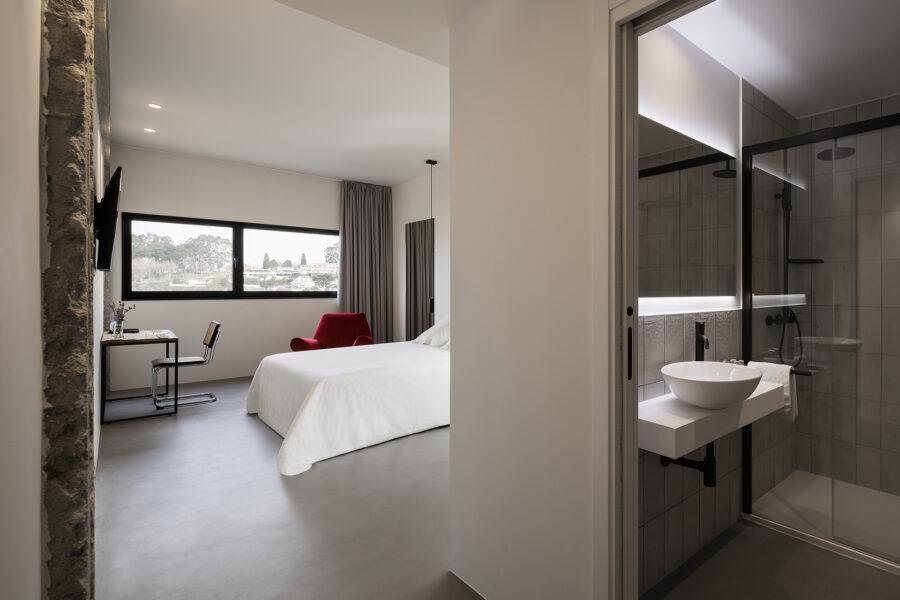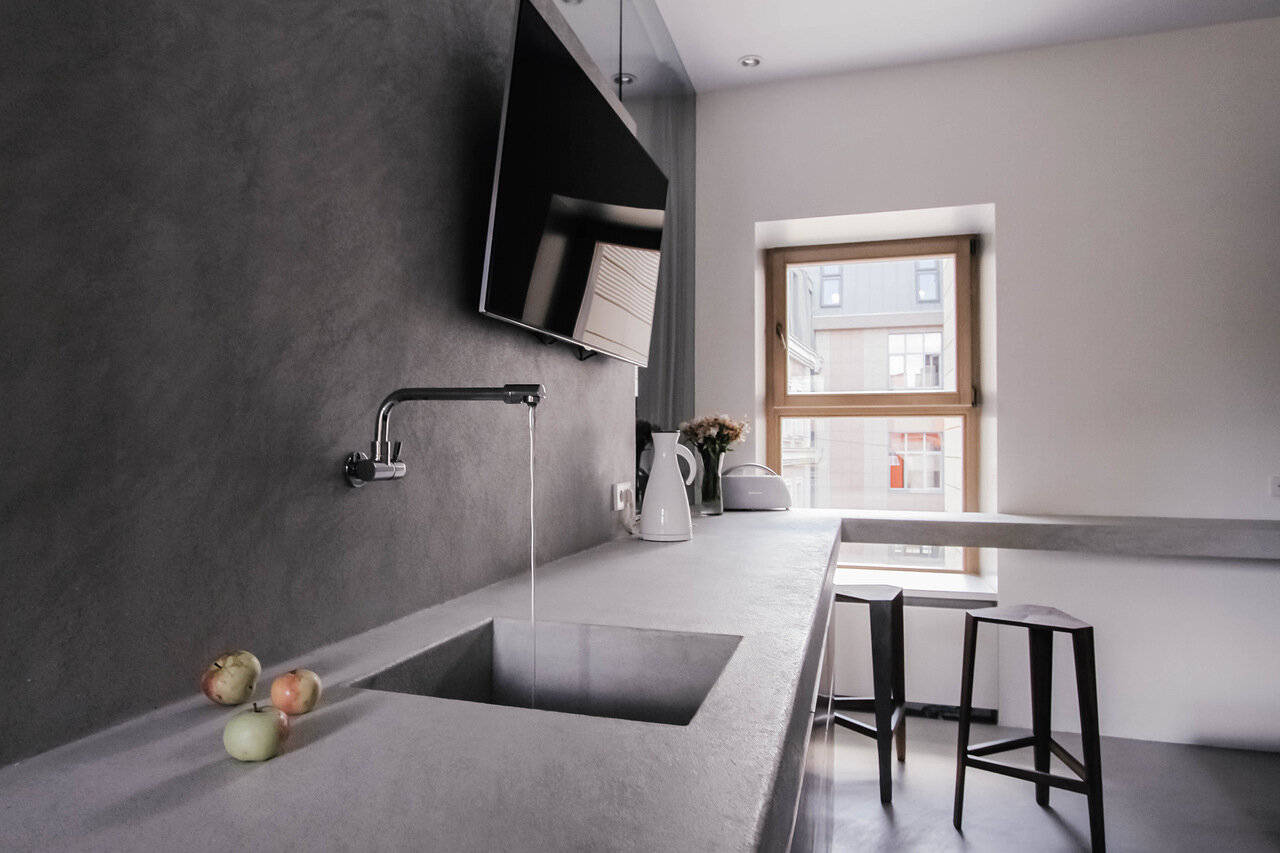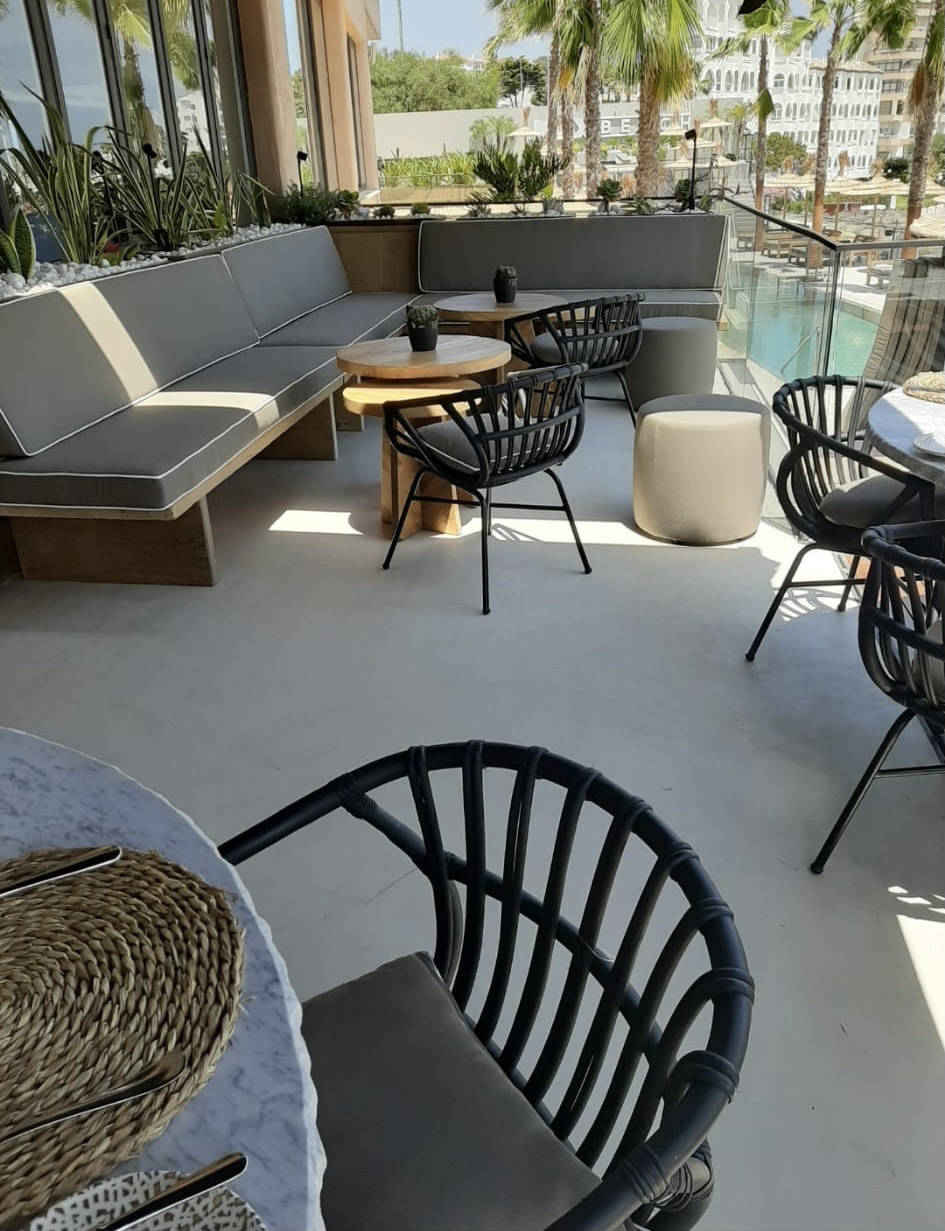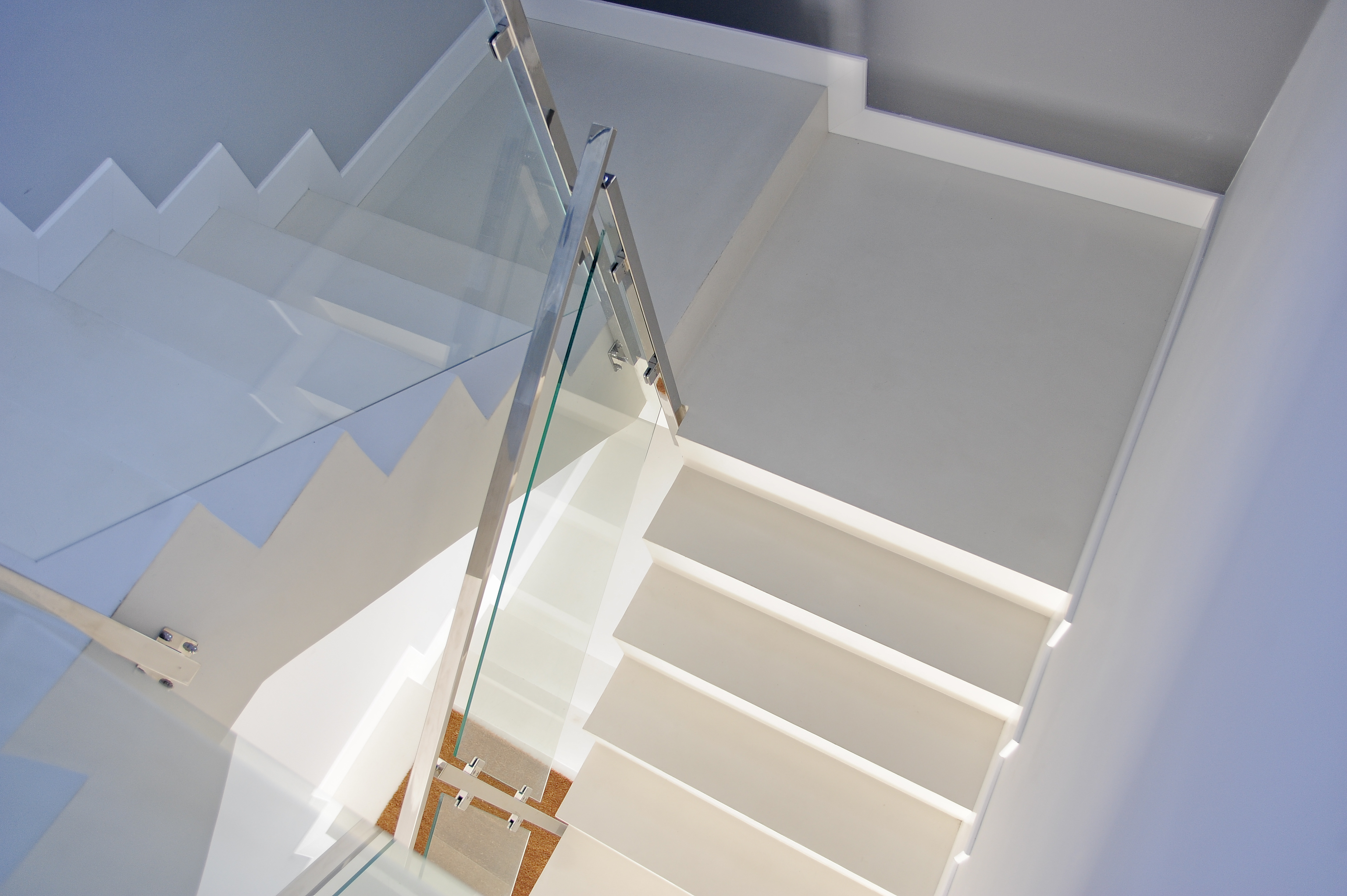Opinions on microcement: problems and advantages to consider
The microcement it is a coating whose popularity has skyrocketed in recent years in interior and exterior decoration. A coating that has become a real trend in the renovation of homes and businesses due to the advantages it offers.
A construction material whose application is solely reserved for an experienced professional. Otherwise, mistakes can be made in the installation that end up degenerating into microcement problems. That's why there are all kinds of opinions about this coating.
In this article we are going to analyze the main pros and cons of this continuous coating, whose decorative solutions are very varied, to clarify and resolve all the doubts that may arise around it.

A coating called microcement: what is it
Microcement or micromortar is a material that enables a quick renovation of spaces without construction or joints. The king of continuous coatings for many due to the variety of applications it allows and a unique artisanal method.
A coating of excellent adhesion that fits any surface as if it were its second skin, transferring only 3 millimeters of thickness. A layer practically imperceptible and insufficient to affect the structural load of the support.
In terms of its composition, microcement is formulated with a base of cement, mineral pigments, resins, and additives. A material that arouses passions, but at the same time raises doubts - the vast majority due to ignorance of the product - about its derived problems.
Microcement arouses opinions to suit all tastes
Its attractive and multifaceted aesthetics and its good mechanical and chemical resistances are the main characteristics that respond to the positive evaluations and opinions of microcement. But there are also those who are not entirely convinced by this coating due to the discredit they attribute to it for cracks, crevices, and dampness.
You can't please everyone, that's clear. In this article we are going to delve into the most relevant benefits of this material as well as the most common "problems" with microcement that can be avoided with some simple tips.

Most common microcement problems
It should be noted that if a quality material is used and the application is carried out by a professional, the microcement will not present drawbacks. And it is that the appearance of fissures, cracks, marks and stains, the problems that most concern about smoothed microcement, are mainly due to failures in fundamental steps of the application of microcement or the poor condition of the support that serves as the base of the new coating.
Making mistakes in the application of microcement
The application of microcement has very marked steps. Altering the order or making mistakes in the process, especially in the priming and sealing, will automatically lead to an undesired result. Hence the insistence that the installation of smoothed microcement must be carried out by a professional applicator. We describe below the most common mistakes when applying microcement.
1. Apply microcement at too low or high a temperature
The ideal ambient temperature for applying microcement is between 15ºC and 25ºC. If the installation of the coating is carried out at a temperature below 15ºC or above 25ºC, problems may arise.
If the temperature is too low, a factor that occurs in the winter season, the surface covered with micro cement can take a long time to harden properly. On the other hand, if the temperature is excessive, the exact opposite happens, the micro cement would harden too quickly.
2. Mixing the microcement pigment poorly
Pigmenting the microcement properly is key. If the instructions are not carefully followed, there may be an excess of groups that cause dark streaks on the surface coated with microcement.
To obtain the wide variety of microcement colours from the Topciment catalogue, it is necessary to respect the dosage indicated on each label both for the quantity and for the type of microcement used.
In addition, the pigment must be vigorously shaken until a homogeneous liquid without irregularities is achieved. Then pour a little of this kneading liquid, into a container, add all of the pigment and mix thoroughly. Then gradually add the microcement and the rest of the kneading liquid in the same container until the required viscosity for each application and a homogeneous microcement color is achieved.
3. Not respecting the steps when installing microcement
The application of microcement requires some steps that must be strictly followed. Not respecting them can be fatal for the final finish.
The installation of microcement on floors or walls, for example, is not the same. Since the type of smoothed microcement to be applied varies. Similarly, not conditioning and leveling the existing support to be coated, can cause future significant problems.
As mistakes cannot be made in the priming of the support or in its sealing either. On this page,you will find everything you need to know to avoid mistakes in the application of microcement

Incorrect repair of a microcement surface
When it is necessary to fix the microcement due to any of the previously described errors or, when using poor quality material, chips have been generated by the blows, it must be properly repaired.
As it is a continuous pavement, without joints, to repair the smoothed microcement correctly it must be done by areas that are large so that the contrast is not too noticeable and the final finish ends up being a disaster.
Fissures and cracks in microcement
If microcement is such a resistant and hard coating, why are there cases where surfaces coated with smoothed microcement crack and cracks appear? Mainly for three reasons that we develop below.
1. Poor quality microcement cracks
Although it may be obvious, it is important to point out that not all microcements guarantee no cracking, only high-performance ones. The lower the quality of the coating, the more likely it is to crack over time. That's why it's very important not to skimp on the quality of the smoothed microcement.
At Topciment we guarantee the professional that our microcements will not crack thanks to their excellent performance and resistances.
2. Microcement fissures to fill expansion joints
As previously mentioned, smoothed microcement does not require expansion joints as it is a continuous coating. However, great care must be taken about what support it is applied to, as although it is compatible with multiple materials, those that have expansion joints such as a concrete slab must be taken into consideration.
If the microcement is placed on a surface with expansion joints, it is very important that they are respected and not filled. If done, the "microcement" could crack.
3. Microcement fissures due to poor support conditions
In relation to the previous condition, if the support on which the microcement is to be installed is not in good condition, it will need to be repaired. Because if this suboptimal support is coated with microcement, it will end up cracking due to the poor condition of the existing support that serves as the base for the smoothed microcement.
4. Fissures and cracks microcement over parquet
El parquet y el microcemento no se llevan bien, debido a que el parquet es un material que está sujeto a variaciones en función de las condiciones ambientales como la humedad. Una humedad que provoca que el parquet se dilata y contraiga, por lo que si se aplica microcemento encima acabará fisurando.
In addition, as parquet is an unstable surface due to having a large number of movable joints, the fiberglass mesh that is applied before the microcement base can break and, as a result, cracks would end up appearing.

Underestimating negative humidity before placing microcement
Negative humidity is usually present in bathrooms, lower parts of houses and even outdoors; especially in concrete slabs that are not well insulated. In this case, it is essential to prime the support correctly before applying the microcement. If this is not done, the surface will end up copying that excess humidity because, let's not forget, in the end this material is just a coating.
To combat negative humidity and prevent it from becoming a problem with microcement, you have to get the primer right. In this regard, we have the anti-humidity primer Primapox®100 Barrier. Made of epoxy composition, it automatically blocks capillary humidity and acts as a vapor barrier.
Sealing the microcement with an inappropriate varnish
Lastly, and no less important, we must talk about the sealing process. The purpose of the varnish or resin is none other than to protect the new coating and make it slip-resistant and waterproof. Each space and each microcement system is compatible with a specific varnish. Making a mistake in this regard can be fatal, which is why it is so important to consult a specialist.
8 advantages of microcement that explain its widespread use
The pros of microcement have captivated construction companies and design and decoration professionals such as architects, interior designers and decorators. Advantages that have led to an increasing bet on this coating in renovations of all types of homes and businesses.
And it is that microcement is a very versatile coating whose decorative options are very diverse. We find microcement floors in hotels, restaurants or offices; kitchen walls orbathrooms with microcement;all types of furniture and microcement pools; terraces...
These are the eight main advantages that have erected microcement as one of the preferred materials by experts for interior and exterior decoration.
1. There are no works or rubble with microcement
One of the pros to definitely consider about microcement. Being a continuous coating without expansion joints, there is no need to use machinery. The microcement is applied on top of the surface material to be renovated, whether it's a floor, wall, ceiling, pool or furniture. There is no need for construction and, therefore, no debris is generated. Not to mention the sense of spaciousness it brings to any room. A very important advantage of microcement to consider.
2. Excellent adhesion of microcement
In relation to the previous advantage, it is worth highlighting the excellent adhesion that microcement has since it is a super flexible material. A factor that speaks very well of this coating since it can be applied to a very wide variety of materials: tiles, ceramics, slabs, cement, plasterboard, plaster, marble, concrete...
3. Microcement is suitable for indoors and outdoors
Microcement is an ideal coating for interiors and exteriors. But you have to know what type to use on each occasion. At Topciment® we have designed seven systems to date. With different bases (cement, aggregates, epoxy resin and lime), number of components (ready to use, single-component and two-component) and for specific applications. All of them in different granulometries and colours so that the applicator and the end customer can choose according to the surface to be covered, the finish they are looking to achieve and the resistances that each one of them offers.

4. The thickness of the microcement does not affect the structural load
One of the most notable peculiarities is its minimal thickness, between 2 and 3 millimeters. An advantage that allows that whatever the material to be coated with smoothed microcement, it will not affect the structural load of the building in question.
5. The microcement is very durable and resistant
Unlike other coatings, microcement stands out for being a very durable material that does not crack. Its properties do not fade over time, but continue to be a very resistant coating to traffic, blows, scratches or sunlight, among many others.
6. Multiple finishes and colours with microcement
The textures that can be achieved with microcement are unique. Multiple finishes depending on the application, the chosen pigment, and above all, the sealer used.
At Topciment we have a wide variety of varnishes, depending on the finish you want to give to the surface coated with smoothed microcement: glossy finish, matte, super matte, satin and even anti-slip and waterproof.
The customization of this coating is unlimited thanks to the wide palette of microcement colors from Topciment. Pigments that give surfaces their own personality and make up one of the competitive advantages of microcement.
7. Waterproof and non-slip microcement
One of the spaces where the use of microcement has most expanded is in bathrooms. Something that has happened because this coating can offer a waterproof finish if a sealer is used that gives it this capacity. At Topciment we have Topsealers , our range of polyurethane varnishes automatically turns the smoothed microcement into waterproof. That's why it's very common to find shower trays lined with microcement, sinks, washbasins and bathtubs as well as walls and floors.
But there's more. Surfaces coated with microcement can also achieve a non-slip finish with our water-based varnish Topsealer WT Anti Slip. No more slipping!
8. Microcement radiant floor
The last pro of microcement, and not least important, is to highlight its good thermal conductivity. An advantage thanks to which smoothed microcement is perfectly compatible with underfloor heating. In fact, it is one of the best building materials for a radiant floor.

Microcement: guidelines for the perfect application
Microcement can arouse a large number of opinions, but all will be positive if some basic guidelines are followed. Next, we are going to detail the different situations.
Apply microcement at the ideal temperature
Microcement is a construction material that, as with all, the environmental conditions in which it is applied affect the outcome of the work or renovation. In this way, you simply have to apply this continuous coating between a temperature range, the ideal being the one that is between 15ºC and 25ºC. Now, let's put ourselves in these two different thermal scenarios.
In the first, in an application below 15 degrees, the process of curing the microcement can be delayed, which can influence its subsequent appearance and the final quality of the application.
Secondly, in an application that is given at temperatures above 25ºC, the microcement may undergo a too rapid hardening process that prevents the microcement from naturally developing its properties.
Mix the pigment correctly
The mix of microcement is a very important point within the entire application process. In fact, if it is not done correctly, large lumps can form and, when applying the mortar, dark streaks will be created that will prevent the surface from showing the color that had been chosen. At Topciment we have a wide range of shades, that's why we recommend following the appropriate dosage for each color, both the quantity and the type of microcement, as the relationship depends on both.
In addition, in the microcement painting process, it is very important to achieve a uniform quality where there are no irregularities, and for this it is very important to mix the mixture well between the kneading liquid and the pigment. Finally, to do this process well, add the microcement and the liquid little by little and continue mixing until you reach the desired viscosity for a uniform paint layer.
Respect the installation steps
This is key if we want the microcement surface to display all its qualities to perfection. In fact, if the process is done correctly, the properties technical and decorative will extend across the applied surface and fill the rooms in which they are located, whether they are floors, walls or ceilings.
In fact, this is because the type of microcement used in each one is different.
On the other hand, it is also very important to adjust and level the foundation or base on which it is going to be applied. This can lead to irregularities in the future that need to be repaired or even replaced. The step of imprinting the surface should be done and carried out in the best way possible. The same applies to the sealing stage, where the application of varnish or sealant will serve to protect the surface from future threats.
However, if you want to know more about the application process, depending on the surface, you can visitour page, a very comprehensive guide in which we perfectly explain each and every one of the steps of the application processes depending on the surface.
Neglecting dampness before applying
Humidity is often one of the most serious threats to any surface. Therefore, it is easy to find, in multiple forms and the result of different processes, on ground floors and on the exterior of homes and/or businesses or companies, as well as on floors or other areas covered with concrete that are not properly insulated. In this news you can read more carefully all about therelationship between microcement and humidity.
To avoid the latter, it is necessary to prime the support correctly, otherwise, moisture can escape from the structure and appear on the walls, columns or pillars. This should always be done before applying the mortar in the area to be covered. Another aspect of priming to consider is choosing the right product, as an incorrect choice can cause more problems with microcement surfaces.
At Topciment we have Primapox® 100 Barrier, which is capable of neutralizing any type of moisture by capillary action, as it is made with epoxy resin, which will provide great resistance against this threat in any situation, preventing moisture from showing on the outer layer and becoming visible.
Seal the microcement with the indicated varnish
The final step in the microcement application process is sealing, as it is precisely with the use of the sealing product, with which the surface is protected and given a waterproof and non-slip condition.
When choosing a sealer or varnish or another, it is necessary to consider the applied microcement, as there are different types of varnishes created specifically for the mortar in question. It is important not to make mistakes and choose correctly if we want our surfaces to have an unlimited duration.
Proper repair of the microcement area
Microcement is a building material that can be repaired when defects arise, but it must be done correctly.
These irregularities, such as the appearance of cracks or fissures caused by the use of low-quality coatings or materials, must be restored. When rehabilitating these areas, it is necessary to ensure that these are as large as possible, so that they do not differ too much from the rest of the pavement and the contrast generated between the two is not too noticeable, breaking the aesthetic balance with the rest of the pavement.
As you may have noticed, there are many more advantages than problems with microcement. Disadvantages that can be avoided if you have qualified experts who materialize the dreamed projects. Do you need an applicator? Do you want to ask for a quote?
Subscribe to our newsletter
Receive in your email tips for the application and care of microcement, the latest trends and news from Topciment products.




